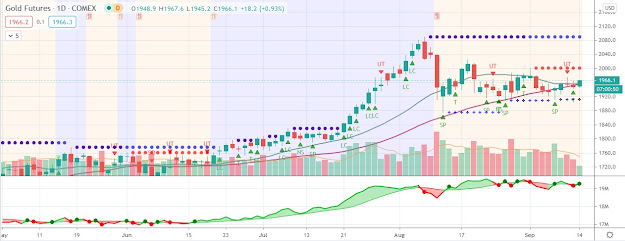Seriously considering implementing a third round of quantitative easing (QE3)
The gold price oscillated between gains and losses on Monday as
financial markets consolidated following their recent substantial
risk-on rally. Gold prices
traded near unchanged at $1,624 per ounce this morning while the U.S.
Dollar Index (DXY) rose 0.2% to 82.858 against a basket of foreign
currencies. The euro currency dipped 0.5% to 1.2258 against the
greenback, thereby relinquishing a portion of its recent advance.
Last week the gold price climbed 2.5% to a multi-month high above $1,630 per ounce – its best such stretch since a 3.1% jump from May 29 through June 1 – amid escalating prospects for further monetary easing across the globe. In doing so, the spot price of gold extended its gains for July to 1.3% and to 3.6% in 2012.
Looking ahead to this week, there is a particularly heavy schedule of items likely to impact the price of gold and the broader financial markets. The Federal Reserve will hold its Federal Open Market Committee (FOMC) meeting on Tuesday and Wednesday, along with the release of its statement at the meeting’s conclusion Wednesday afternoon. Speculation has increased of late that Chairman Ben Bernanke and his fellow central bankers are more seriously considering implementing a third round of quantitative easing (QE3) at either this week’s meeting or the following one in September.
Across the Atlantic, the European Central Bank (ECB) will hold its monthly monetary policy meeting on Thursday. The ECB meeting is likely to be a particularly significant event for the market this week in light of recent comments by ECB President Mario Draghi that the central bank will do “whatever it takes” to preserve the status of the euro currency.
In addition to the central bank meetings, the U.S. economic calendar includes several key reports – including the ADP employment report on Wednesday and the monthly non-farm payrolls data on Friday. Additional data on the U.S. housing, manufacturing, and service industries are expected to have a less but still meaningful impact on the markets.
Quantitative Commodity Research consultant Peter Fertig noted in a Reuters report this morning that “After the comments from Draghi, the ECB will have to deliver, otherwise it will end in catastrophe for the euro. If the ECB now delivers in cooperating with the EFSF (European Financial Stability Facility), there is a really good chance that we will see gold and silver break out to the upside.”
Fertig went on to say that with respect to the price of gold, “We have several resistance points, with the crucial area at $1,670 to $1,700. If you take that out, there could be a strong move towards $1,790, the high we reached at the end of February.”
Last week the gold price climbed 2.5% to a multi-month high above $1,630 per ounce – its best such stretch since a 3.1% jump from May 29 through June 1 – amid escalating prospects for further monetary easing across the globe. In doing so, the spot price of gold extended its gains for July to 1.3% and to 3.6% in 2012.
Looking ahead to this week, there is a particularly heavy schedule of items likely to impact the price of gold and the broader financial markets. The Federal Reserve will hold its Federal Open Market Committee (FOMC) meeting on Tuesday and Wednesday, along with the release of its statement at the meeting’s conclusion Wednesday afternoon. Speculation has increased of late that Chairman Ben Bernanke and his fellow central bankers are more seriously considering implementing a third round of quantitative easing (QE3) at either this week’s meeting or the following one in September.
Across the Atlantic, the European Central Bank (ECB) will hold its monthly monetary policy meeting on Thursday. The ECB meeting is likely to be a particularly significant event for the market this week in light of recent comments by ECB President Mario Draghi that the central bank will do “whatever it takes” to preserve the status of the euro currency.
In addition to the central bank meetings, the U.S. economic calendar includes several key reports – including the ADP employment report on Wednesday and the monthly non-farm payrolls data on Friday. Additional data on the U.S. housing, manufacturing, and service industries are expected to have a less but still meaningful impact on the markets.
Quantitative Commodity Research consultant Peter Fertig noted in a Reuters report this morning that “After the comments from Draghi, the ECB will have to deliver, otherwise it will end in catastrophe for the euro. If the ECB now delivers in cooperating with the EFSF (European Financial Stability Facility), there is a really good chance that we will see gold and silver break out to the upside.”
Fertig went on to say that with respect to the price of gold, “We have several resistance points, with the crucial area at $1,670 to $1,700. If you take that out, there could be a strong move towards $1,790, the high we reached at the end of February.”




Comments
Post a Comment